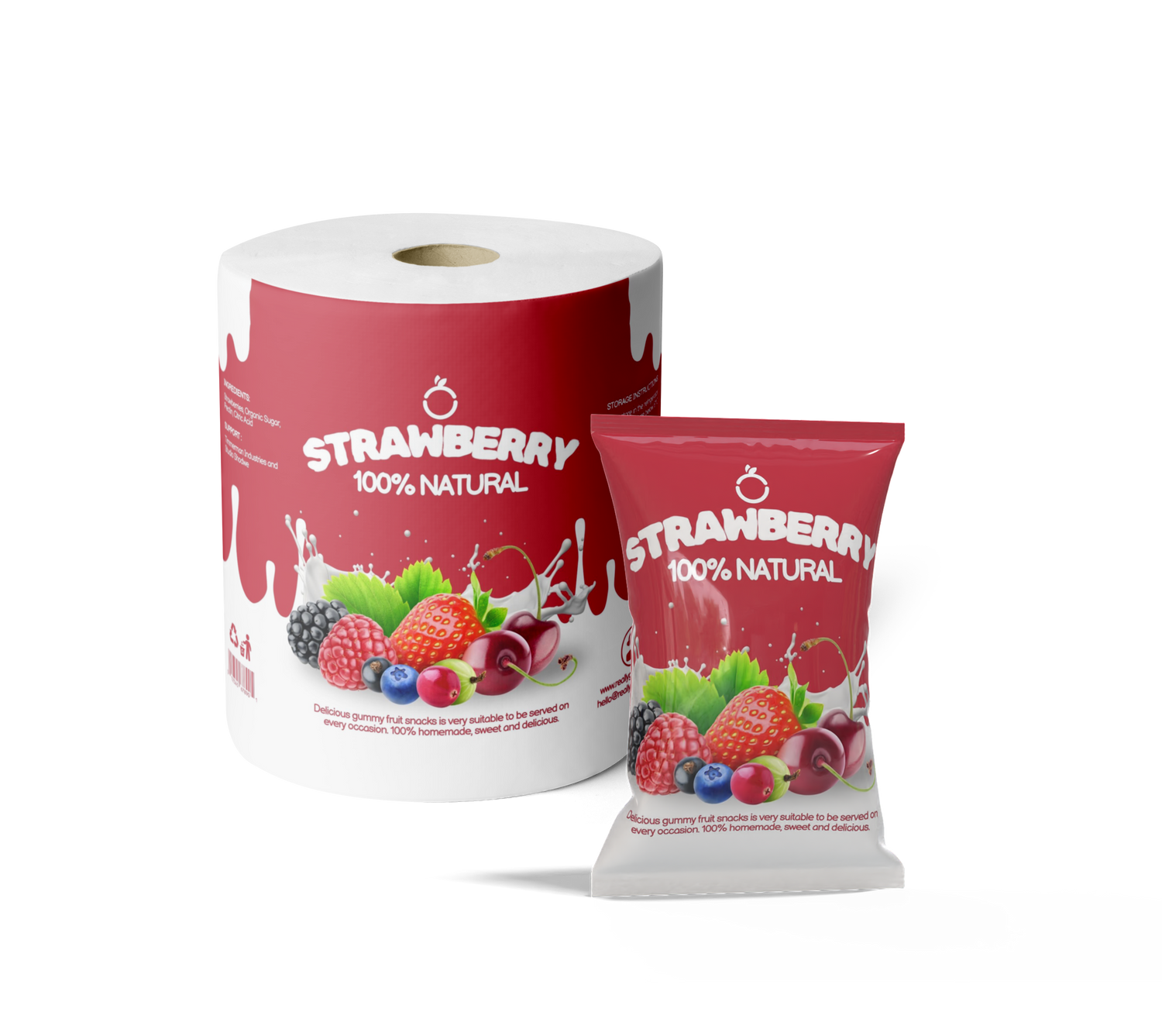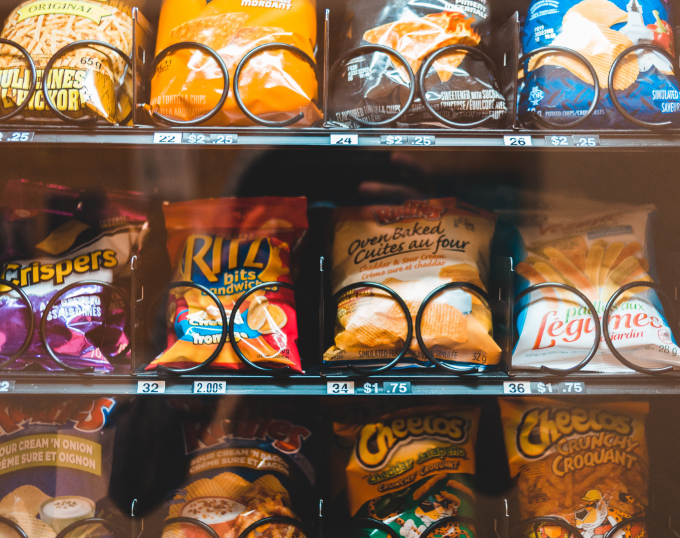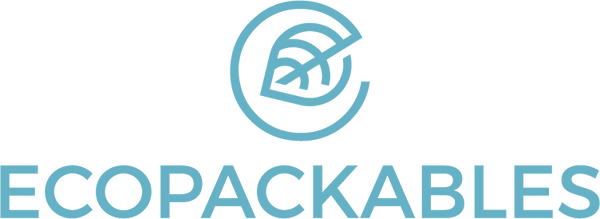-

-
Designing sustainable food packaging isn’t just about choosing the right materials. It also means navigating FDA regulations, communicating environmental claims accurately, and ensuring barrier and shelf-life performance. This guide breaks it down so your packaging is safe, compliant, and aligned with your sustainability goals.
IN THIS GUIDE
- FDA Food Packaging Rules (U.S.)
- HAzardous Chemicals
- Green Claimes
- State-Level Regulation
- Compostable & recyclable
- Best Practices
- EU Overview
FDA Food Packaging Rules (U.S.)
Under the Federal Food, Drug, and Cosmetic Act, the FDA ensures food packaging materials do not pose a health risk. In practice, this means any material intended for food contact must be proven safe – it must not leach harmful substances into the product. The FDA sets migration limits for chemicals, defining the permissible amount that can transfer from packaging to food. If your package contacts food, it must follow FDA regulations:
What must appear on food packaging:
-

Front (Principal Display Panel):
- Product name
- Net quantity (weight/volume)
-

Information Panel (usually adjacent):
- Ingredients (by weight)
- Allergen disclosure (e.g. “Contains: milk”)
- Nutrition Facts (standard FDA format)
- Name and address of manufacturer/distributor
These elements must follow strict formatting guidelines: font size must be at least 1/16 inch (1.6 mm) in height based on the lowercase “o”, type must be in a legible, easy-to-read style (not decorative or script), and there must be sufficient contrast between text and background—typically black text on a white or light background is preferred.
Food-contact materials:
Not all sustainable films are automatically food-safe. Packaging must not allow harmful substances to migrate into food. If your packaging will touch food, every material in the contact layer must be approved by the FDA through one of the following pathways:
-

GRAS Substances (Generally Recognized as Safe)
- These are materials the FDA or independent experts have determined to be safe under the intended use conditions.
- Example: polyethylene (PE), polypropylene (PP), and paperboard treated with specific coatings.
- GRAS applies more commonly to food ingredients, but certain basic packaging materials may fall under this designation when used in conventional ways.
- These are materials the FDA or independent experts have determined to be safe under the intended use conditions.
-

FDA Food Contact Notifications (FCNs)
- For newer or engineered materials—such as bio-based films, adhesives, or compostable polymers—manufacturers must submit a Food Contact Notification to the FDA.
- If accepted, that material is added to the FDA’s FCN database for specific uses.
- Example: PLA (polylactic acid) may be cleared for use in dry food pouches but not for high-fat or acidic foods without further testing.
- FCNs are specific to manufacturer, use case, and construction. A film cleared for a dry snack may not be cleared for hot liquids.
- For newer or engineered materials—such as bio-based films, adhesives, or compostable polymers—manufacturers must submit a Food Contact Notification to the FDA.
Hazardous Chemicals & Packaging Safety
Beyond general safety, there’s growing scrutiny on specific chemicals in packaging, especially those used in coatings, inks, and functional barriers.
-
PFAS (per- and polyfluoroalkyl substances):
Used in grease-resistant papers and some compostable containers. Linked to health concerns. The FDA is phasing out some PFAS variants and discouraging their use in food-contact materials.
-
BPA (Bisphenol A):
Banned from baby bottles and limited in food cans. Companies are moving toward BPA-free liners and films. BPA can leach into food and beverages, particularly when heated or scratched. There are concerning potential health effects from BPA exposure, particularly for infants and children
-
Heavy metals in inks and adhesives:
Regulated at both state and federal levels. Packaging should meet heavy metal thresholds (like those in the Model Toxics in Packaging Legislation).
Green Claims & FTC Guidelines
The FTC’s Green Guides are your roadmap for truthful sustainability marketing. Claims must be specific, accurate, and verifiable. All claims must include disclaimers if there are limitations, and be easy for consumers to understand at a glance.
-

Recyclable
Only if a substantial majority of consumers have access to recycling for that item. If only certain components are recyclable, label accordingly.
-

Compostable
Only if the packaging breaks down in a timely manner in the claimed environment (e.g. 180 days for home or 90 days industrial compost). If composting isn’t widely available, you may want to consider other materials options.
-

Recycled content
Specify amount and type (e.g., “Made with 80% post-consumer recycled plastic”). You must have records to support these claims.
-

Avoid unqualified terms
Like “green,” “eco-friendly,” or “sustainable” unless clearly defined and substantiated.
State-Level Regulations: California & Beyond
Federal compliance isn’t always enough. Several states have stricter rules—especially California:
-
SB 343
Restricts use of the recycling symbol unless the item is recyclable in most of California.
-
SB 54
Introduces Extended Producer Responsibility (EPR), requiring brands to help fund recycling infrastructure.
-
PFAS bans
Several states prohibit PFAS in food packaging, especially in molded fiber and paper-based formats.
Other states like Oregon, Washington, and New York are following suit with EPR programs and chemical restrictions. If you sell nationally or internationally, it's best to align with the strictest applicable laws.
Compostable & Recycled Materials: Labeling and Safety

Compostables
- Shelf life is typically about 12 months, depending on storage conditions.
- Materials must meet ASTM D6400 (industrial) or EN 13432 (EU) standards to be labeled compostable.
Include clear instructions:
- “Compostable in industrial facilities”
- "Suitable for backyard composting”

Recycled content:
- Cannot be in direct food contact unless FDA-approved or layered beneath a virgin barrier.
- Must specify percentage and material origin (post-consumer, post-industrial).
Use qualified claims, e.g.:
- ✅ “Outer layer made with 50% post-consumer recycled PET”
- 🚫 Avoid: “Eco-friendly recycled packaging” without details
EcoPackables offers PCR structures where allowed and laminates with food-grade virgin content when needed.
EU Overview

The European Union has stricter sustainability packaging laws—and U.S. trends often follow.
Key differences:
- All packaging must be recyclable or reusable by 2030
- Mandatory recycled content in plastic formats (25–30%)
- Bans on single-use plastics and PFAS
- Verified green claims under the proposed Green Claims Directive
- Producer responsibility is law across the EU
🔗 Learn more:
Best Practices for Sustainable, Compliant Packaging
-
Design with the end in mind
Use mono-materials when possible to aid recycling or composting.
-
Validate shelf life:
Especially for compostables or mixed-material laminates. Include “Best by” dates if relevant.
-
Back up every claim:
Keep records of test results, certifications, and supplier guarantees.
-
Use compostable or recyclable logos
when they apply to the full package and are legally compliant.
-
Work cross-functionally:
Ensure your marketing, legal, sourcing, and sustainability teams are aligned on messaging and compliance.
Ecopackables offers a full suite of sustainable pouch options—from compostable and recycled to renewable, high-performance films—all designed to meet FDA compliance and FTC green‑claim standards. Here’s how we support your brand’s goals:

Pouch Material Structures
BioLaminate™ (Sugarcane-based PE, not compostable)
- Made from renewable sugarcane-derived polyethylene
- Chemically identical to virgin PE and fully recyclable in film streams
- High-performance: excellent barrier, prints well, shelf life up to 2 years
ReLaminate™ (Recycled + virgin barrier)
- Contains post-consumer/post-industrial PCR in outer layers
- Includes a virgin food-grade inner barrier to meet FDA food contact rules
- PCR content typically 40–60%, fully documented for substantiated claims
Compostable Laminate
- All layers compostable (PLA, PBAT, kraft), certified to ASTM D6400 / EN 13432
- 12 month shelf life for dry or low-moisture foods; includes clear "industrial compost" disposal instructions

Pouch Styles & Features
- Flat Sachet – Three-side seal; ideal for single servings
- Flat Bottom – Boxy base for bulk goods; adds stability
- Stand-Up Pouch (“doypack”) – Expands when filled; great for retail visibility
- Coffee Pouch – Includes coffee valve for freshness, ideal for coffee & tea
- Roll Stock – Formats for FFS machinery, customizable for high-volume runs
- Lidding film - for yogurt cups and other lidded goods
Add-On Features:
- Degassing valves (compostable options available) – essential for roasted coffee
- Tin-ties – Resealable metal strip
- Zippers – Resealable closures for repeated use
- Spouts – For easy pour products
- Tear notches – Easy opening
- Windows – Clear/frosted for product visibility
- Hang holes – For retail peg display
- Laser-cut perforations – Easy-pull opening
- Finishes – Gloss, matte, spot matte
- Print capabilities – Up to 8-color flexo or digital, with water/soy-based inks
How We Ensure Compliance & Sustainability
- ReLaminate structures include a virgin inner layer to comply with FDA food-contact regulations—while maximizing recycled content in outer layers
- BioLaminate™ offers the renewable advantage of sugarcane-based PE, fully recyclable and high-performing
- Compostable pouch options are certified, shelf-life tested, and labeled with end-of-life instructions
We assist with placement and compliance of:
- FDA-required panels (Nutrition, allergen, net weight, brand, manufacturer)
- FTC-aligned sustainability claims (recyclable, compostable, PCR content)
- Certification logos
- Proper disposal guidance to avoid greenwashing

Conclusion: Real Sustainability Takes Strategy
Creating food packaging that’s safe, sustainable, and honest isn’t simple—but it’s absolutely doable. Between FDA safety rules, FTC labeling guidance, and evolving state laws, compliance is more than a checkbox—it’s a brand differentiator.
Whether it’s a compostable laminate with shelf-life limits, a recyclable pouch with a barrier layer, or a claim about PCR content, your packaging tells a story. We’re here to help you make sure it’s the right one.





